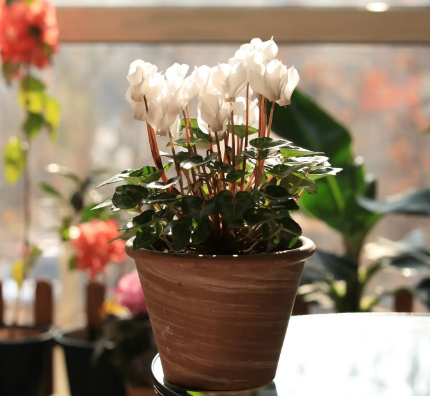We hope that everyone who loves life can incorporate gardening into their routine, even if it’s just with one pot of flowers. If you no longer have a garden, you can still enjoy the beauty of gardening at home with potted plants.

Why can’t garden soil be used for potting plants? Why do we need potting mix?
When we think about growing flowers, we need soil, water, and sunlight. Today, let’s talk a little bit about soil. Have you ever observed the soil in the plants at home or your parents’ house? Is it loose or compacted into clumps? Is it suitable for growing flowers? That’s the topic we’re discussing today.
Can we use garden soil for potted plants?
The answer is no. Garden soil in nature contains various microorganisms, earthworms, and organic matter produced by the metabolism of plants and animals, creating a self-sustaining ecosystem. This helps maintain the soil’s looseness and provides the necessary nutrients for plant growth. When garden soil is used in a container, it disrupts the flow of materials and energy, destroying its self-regenerating ability. This leads to compacted soil, a lack of nutrients, and poor root development.

-
What is garden soil?
Garden soil, also known as vegetable garden soil or field soil, is usually obtained from vegetable gardens, flowerbeds, or even regular dirt.
-
What is potting mix?
Potting mix (or potting soil) is a growing medium used for container cultivation. In recent years, people have increasingly turned to soil-less or low-soil mediums, which consist of a mix of materials such as peat moss, coconut coir, perlite, and vermiculite. (We will introduce these in detail later.)
-
Differences between garden soil and potting mix:
-
Garden soil may contain unwanted elements, such as bugs, harmful microorganisms, or even weed seeds.
-
Garden soil is prone to compacting, which affects the air circulation and root development of potted plants. This leads to problems like:
-
The roots can’t grow properly.
-
Water doesn’t drain well, causing root rot.
-
Water doesn’t permeate the soil, preventing nutrients from reaching the roots.
-
-
Potting mix is horticulturally safe, light, balanced, and standardized, meaning it doesn’t require sterilization.
-
Potting mix is loose and aerated, which helps plant roots thrive:
-
The roots can spread freely.
-
The mix is airier, which makes breathing easier for the roots.
-
Water can be evenly absorbed.
-
The mix is nutrient-rich.
-
-
-
How to prepare garden soil for pots:
When selecting garden soil, avoid heavy clay or yellow soil.
First, use a mesh screen to sift out any impurities from the collected garden soil.
Next, sterilize the remaining soil to eliminate pathogens.
To enrich the garden soil, you can add river sand, well-rotted manure, leaf mold, or compost. Additionally, to improve aeration, mix in materials like peat moss, vermiculite, or expanded clay.
Finally, remember to regularly aerate and fertilize the soil while caring for your potted plants to ensure they grow healthy and strong!

